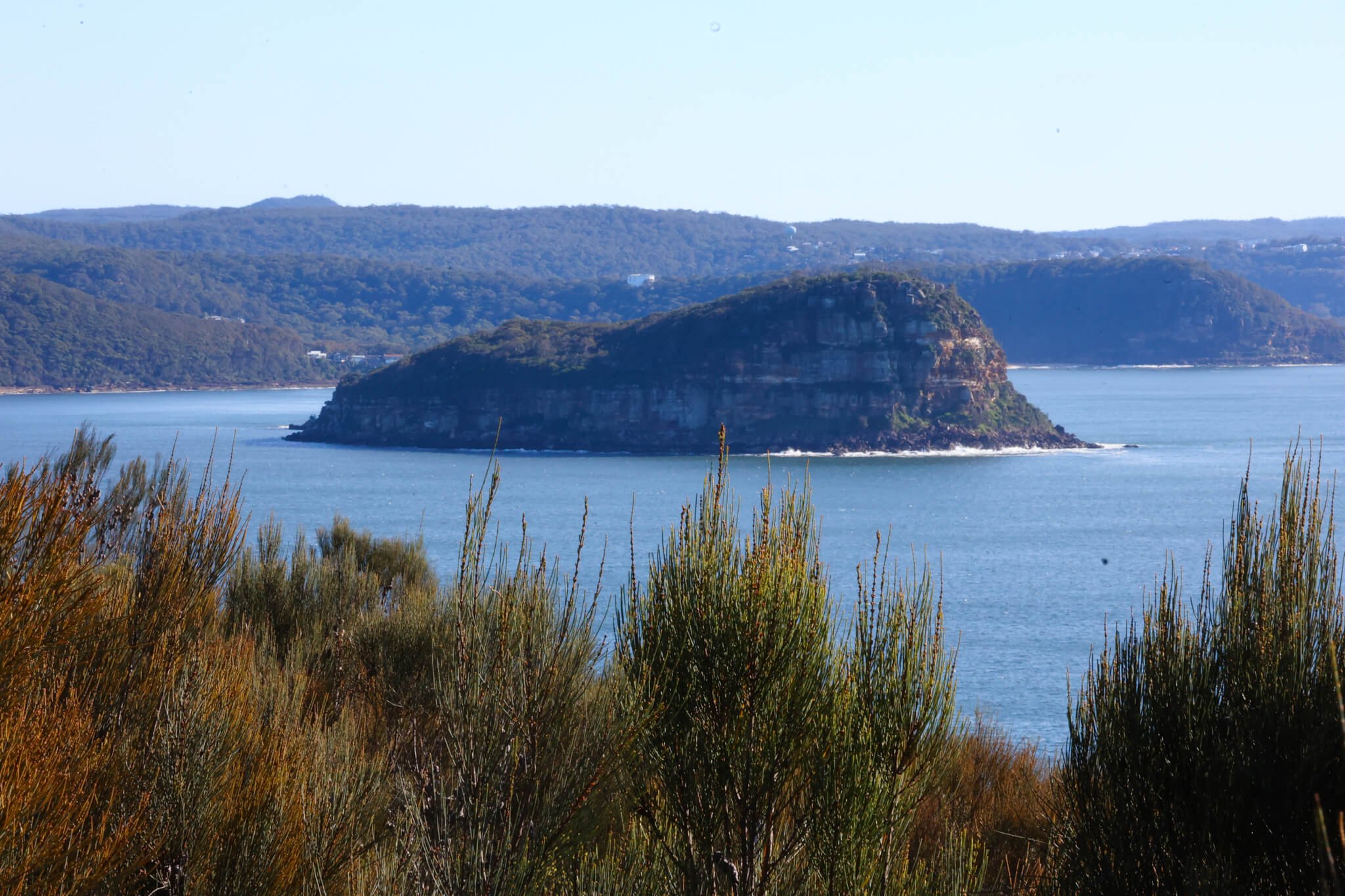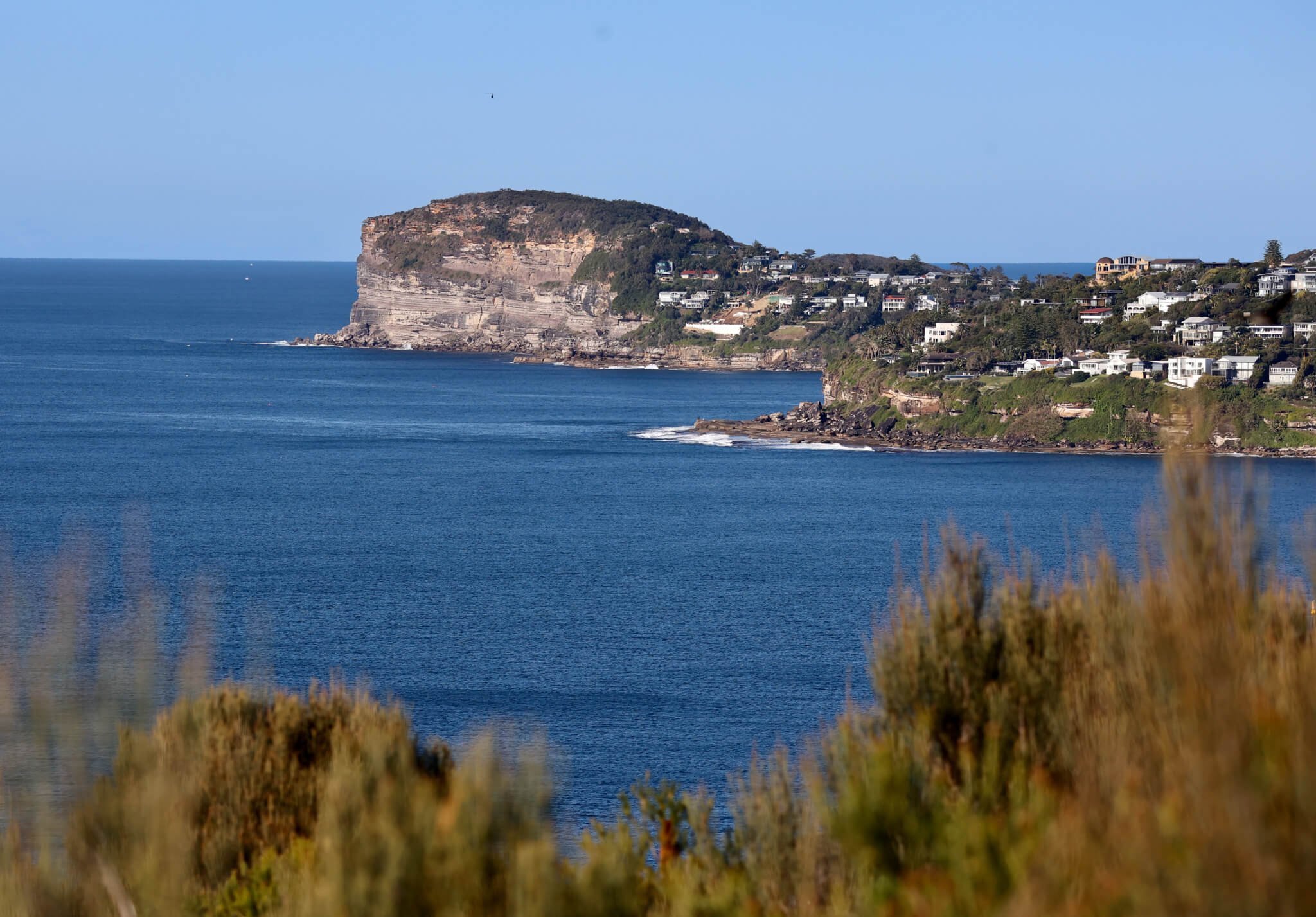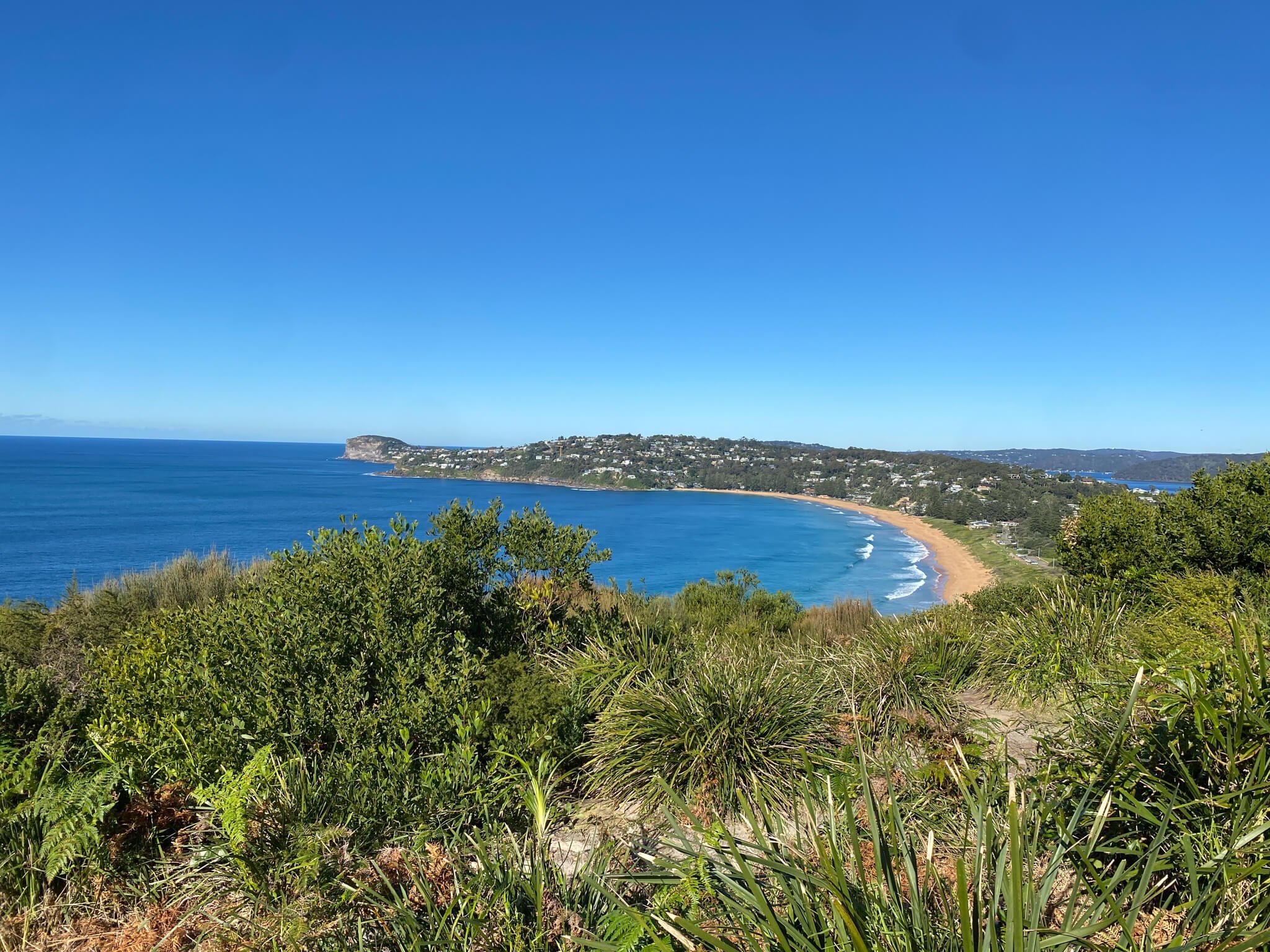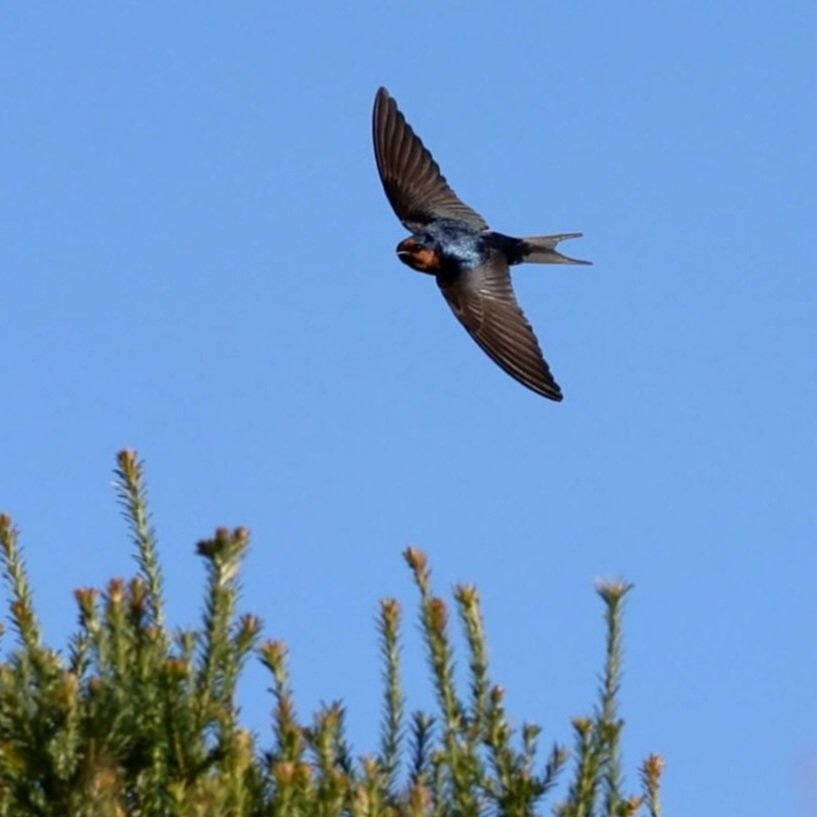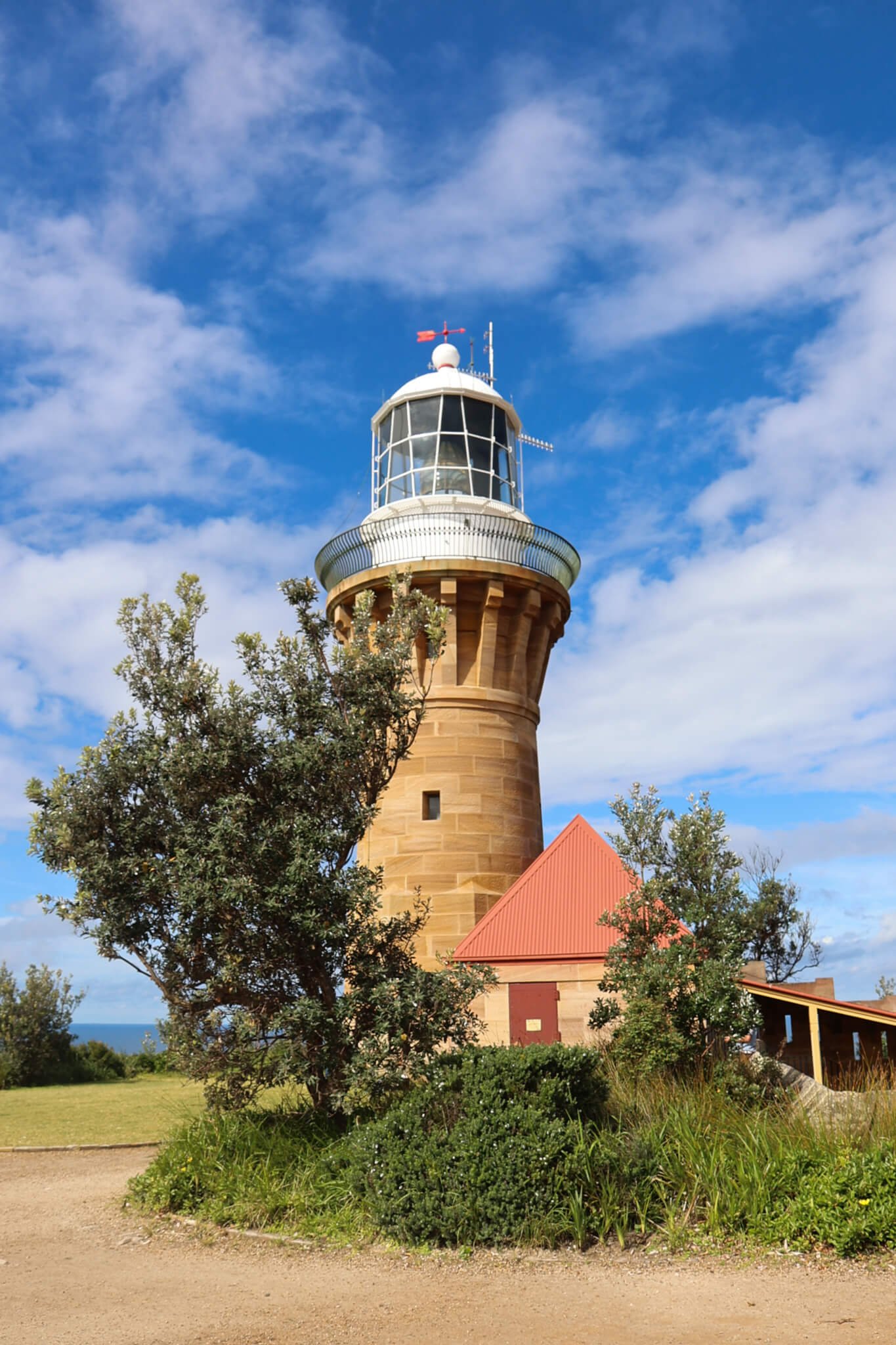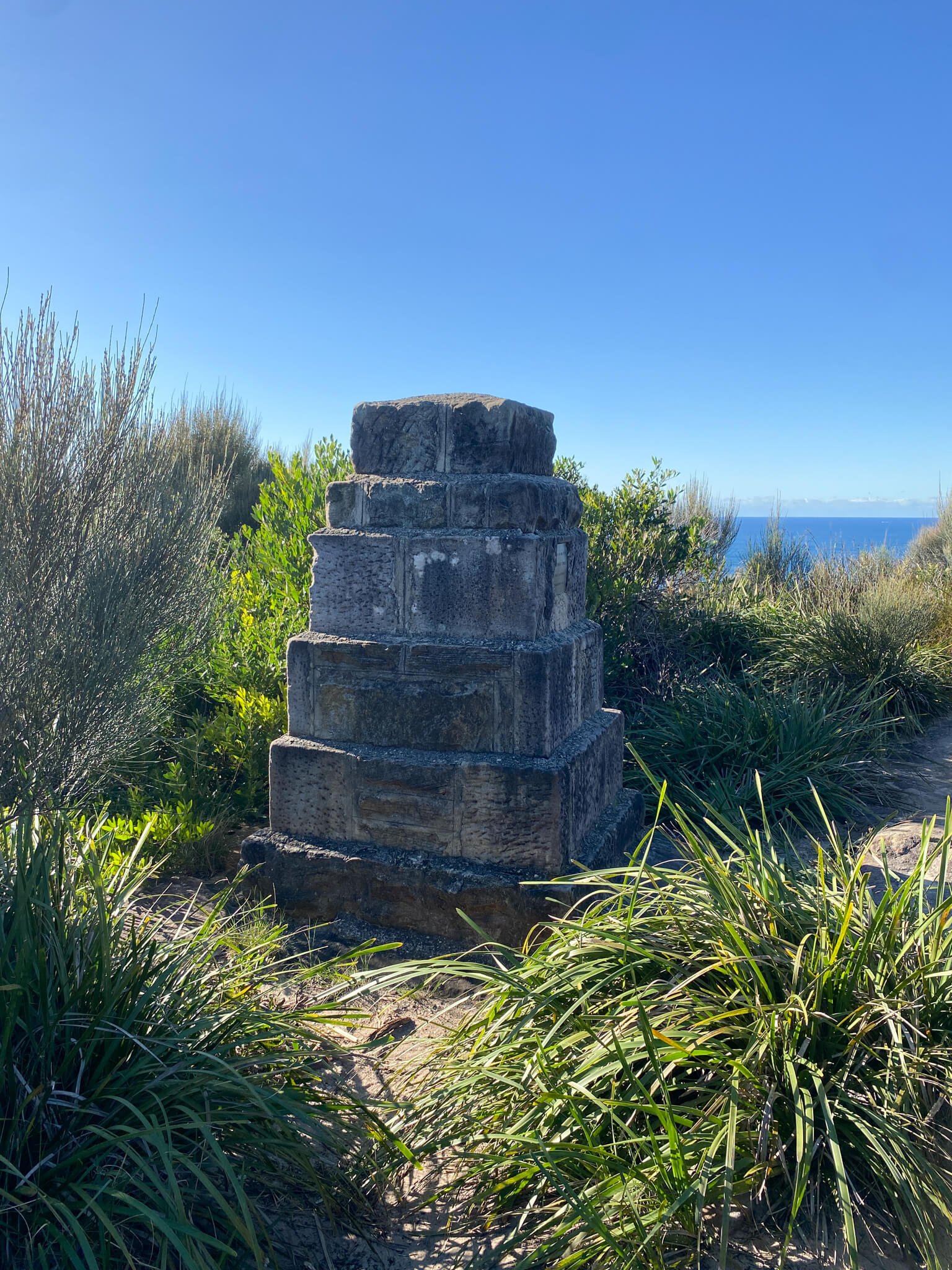Barrenjoey Headland Palm Beach
If you’ve spent any time at all in Sydney, you’ve probably heard of this walk. And with good reason. Spectacular scenery and expansive coastal views await, as you climb up to the headland at the northern end of Palm Beach.
This is not a long walk, but it will certainly get your heart-rate up. And if you’re lucky, once you reach the top you may even see a whale!
To begin
Enter Governor Philip Park off Beach Road, just past the golf course. Head to the carpark, and park near or just beyond the North Palm Beach Surf Club.
Unless you’re a Northern Beaches resident with a permit, you’ll need to pay for parking and it’s not cheap. (You may be able to find some free parking in some of the streets close by.)
From the carpark head north in the direction of the lighthouse.
Take the sandy path that begins at the edge of the carpark. With native shrubs and chattering birds, this pretty path soon leads off to the left and down to Station Beach and the start of the walk up the hill.
The walk
As you approach the start of the climb to Barrenjoey Headland, you’ll see that you have two options. The first, known as The Smugglers Track is a 400 metre climb that will take about ten minutes (depending on your level of fitness). The second is the Access Trail which is double the length and takes about fifteen minutes. The difference is in the steepness of the climb and in the views you’ll get going up.
Considering both, I took the Access Trail. It’s a much more gentle slope (though still quite steep in parts) and at every turn, there is something to see. To begin with, it’s views back down over Pittwater, but as you ascend you’ll begin to see over to the other side, to the surf beach and the ocean and soon to the long strip of narrow land that separates the two.
As the ocean comes into view you’ll start to hear it too. Curiously, there is one point in particular, at which the sound gets even louder, in waves. As you climb, look out for a large boulder that sits on the left side of the path. Stop for a minute at this point and you’ll hear the sound of the ocean waves amplified by the rock. It’s pretty cool but I have no idea of the how or the why….. Anyone?
The View from the top
When you reach the top of the headland, you’ll be standing on Sydney’s northern most point, 91 metres above sea level. This position and elevation afford unique views.
Standing on the central viewing platform, with the lighthouse at your back, look left across to Lion Island and over the calm waters of Broken Bay. Bring your gaze around to see the Central Coast which is clearly visible opposite. Moving around the headland, you’ll see the ocean stretching south toward the Northern Beaches, then look back over the isthmus that separates the ocean from Pittwater and up to the Hawkesbury River in the west.
From May to September, Barrenjoey Headland is a popular spot from which to view migrating whales. Do bring binoculars and a zoom lens though, because they’re likely to be a long way out.
The Headland
The headland was named as "Barrenjuee" by Governor Phillip in 1788 after the Aboriginal name for small wallaby or kangaroo. This became ‘Barrenjoey’ with time.
The Garigal people once occupied this headland as well as many of the areas you can see before you. For thousands of years, the surrounding land and sea would have provided local clans with an abundant food supply. Tragically, many of these clans were wiped out with the introduction of diseases such as smallpox in 1789. As a result, little is known of their way of life, pre-colonial settlement.
If you have the time, it’s worth taking the bushland trail to explore the headland a little further. The path will take you closer to the water, (though not all the way down), and if there are any whales about, you’ll be just that little bit closer to them.
The path down is a little uneven but not difficult to traverse. It’s surrounded by native trees and flowering shrubs which attract a variety of birds, including sea-hawks and swallows, kingfishers and parrots.
The Lighthouse
The lighthouse was built over 140 years ago, from sandstone sourced on the site. It was not the first light built on the headland but it is certainly the most impressive, and the most functional.
In 1868 the Stewart Towers stood at either end of the headland. They were wooden structures. which housed lanterns visible to ships on either side. Only ever meant to be temporary, they were not sufficient enough to prevent several nearby wrecks and their job was taken over with the construction of the current lighthouse and adjoining keeper cottages in 1881.
Stones marking the sites of the first structures can be found on the headland, along with the grave of the first principal lighthouse keeper, George Mulhall. Mullhall was reportedly struck by lightning on the headland and died soon after. (A good reason to heed the warnings about going up in wild weather.)
The beacon was manned by a series of keepers until the light was changed and its operations automated in 1932.
National Parks conducts tours of the lighthouse every Sunday at various times. Bookings are required.
The Return Trip
Retrace your steps to return to the start, enjoying some great views of the surf beach on the way down. Alternatively, take the Smugglers Track for something different.
If you know the area, you may be wondering what happened to The Boathouse, as you walk back along Station Beach. This popular waterside cafe was demolished early in 2022 and is to be replaced by a new structure due for completion in early 2023.
If you’re feeling hungry or thirsty as you head back to the car, there are a couple of other options.
Dunes Restaurant sits behind the carpark and they have a kiosk where you can pick up coffee and a bite to eat. If you’ve planned ahead you could even take a table at the restaurant after your walk, though you might want to change out of your walking gear first.
Alternatively, The Summer Bay Kiosk at the Surf Club does takeaway. Yes, North Palm Beach is where they film Home and Away and have done since 1988. If you’re a fan (and at a very loose end), you can pop down on weekdays and possibly catch some filming.
In the area
Looking to clock up a few more steps?
Take a stroll along the 2 km stretch of Palm Beach to the southern end and ‘Kiddies Corner’, a popular spot for swimming. There’s an ocean pool at this end and above it a stairway you can take to continue walking on to Whale Beach, Avalon and beyond.






